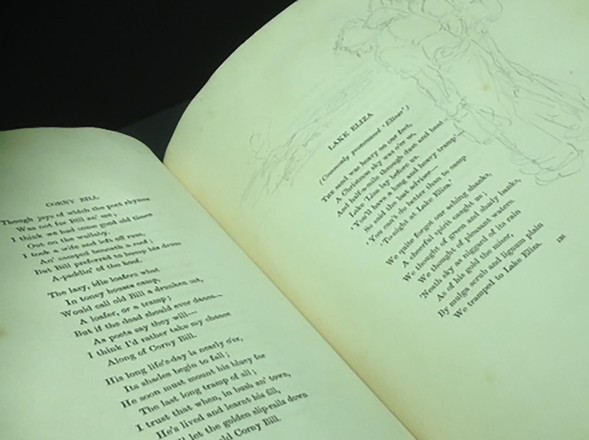Henry
Lawson (1867–1922) was an Australian writer and poet born in Grenfell, NSW. His mother
Louisa was a poet and newspaper proprietor, and his father was a miner. The Lawsons
experienced ongoing financial difficulties throughout his childhood, and his
formal education experienced numerous interruptions.
As an
adult he moved around Australia and New Zealand, working various jobs and achieving
some success selling his writing, both poetry and journalism. In 1892, he was commissioned
to travel inland by JF Archibald, editor of The
Bulletin. This assignment to drought affected western NSW was a key source
of inspiration to his poetry, which often focused on hard times and the
down-and-out of society.
Norman
Lindsay (1879–1969) was an Australian artist, etcher, sculptor, writer and cartoonist born
in Creswick, Victoria. Primarily known as a multi-talented artist, he also
wrote novels, essays, literary criticism and reminiscences, but is probably
best known for his children’s book The
Magic Pudding (1918). He lived and worked in Melbourne, Sydney and London, moving
in 1920 to Springwood in the Blue Mountains, NSW where he lived for the rest of
his life.
Lindsay
was a significant contributor to The
Bulletin, where his drawings visually represented the journal’s
nationalistic and often racist editorial policy. Lindsay and Lawson moved in
the same circles – both were members of the Dawn and Dusk Club, a society of bohemian
artists and writers, and both contributed to The Bulletin.
Lawson
was also a visitor to Lindsay’s home in Springwood. Through their work at The Bulletin, both were connected to J.F.
Archibald, the journal’s founder (and namesake of the portrait prize).
Archibald was an influential supporter of both, and Lawson dedicated this book
to him.
In the days when the world was wide and other
verses was Lawson’s
first collection of poems. This particular copy features about 12 pencil and 20
pen and ink drawings by Norman Lindsay, illustrating the poems.
It is
also possible that Lindsay simply intended the additional illustrations as
decoration for this particular copy. The Library also holds copy 27 of this
edition, which has been illustrated in pencil throughout by Walter Syer (this
volume can be found in the Dixson Library 89/571). These drawings
also complement the text in a way that suggests preparation for publication.
However, the letter from Syer to William Dixson which has been pasted into the
book indicates that Syer was commissioned by Dixson to illustrate this copy,
for personal enjoyment rather than publication.
Whatever
the reason for Lindsay’s drawings, the illustrations appear up to page 142 only
(of a 234 page book), and not all have been rendered in pen and ink, indicating
that Lindsay was unable to complete this project.



 Back to list
Back to list